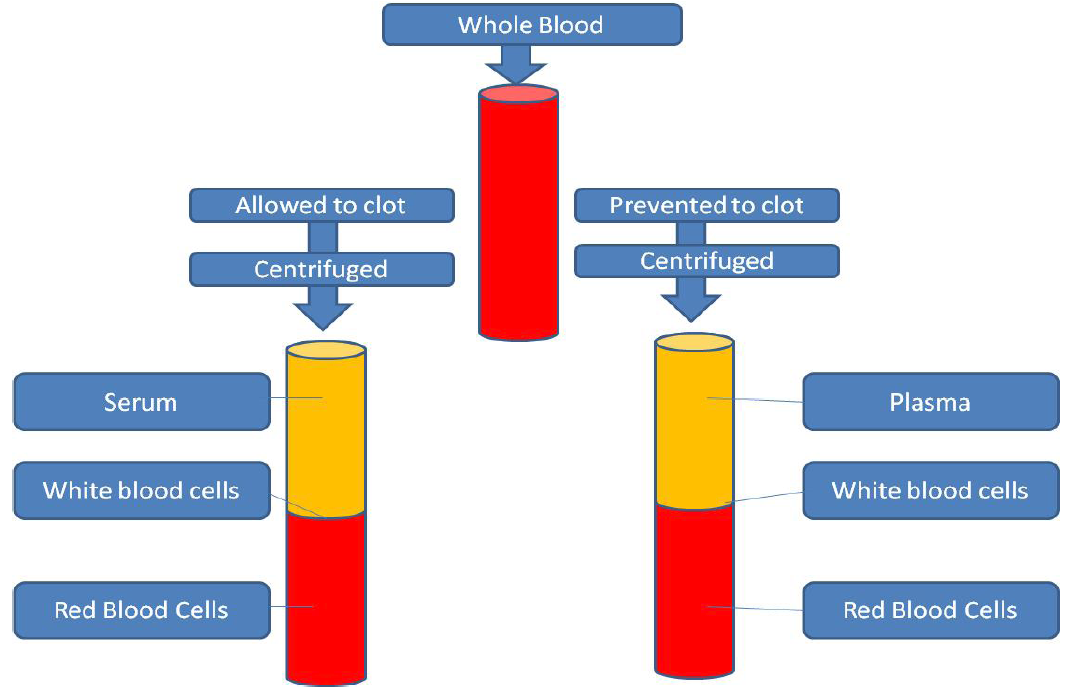


 علم الكيمياء
علم الكيمياء 
 الكيمياء التحليلية
الكيمياء التحليلية 
 الكيمياء الحياتية
الكيمياء الحياتية 
 الكيمياء العضوية
الكيمياء العضوية 
 الكيمياء الفيزيائية
الكيمياء الفيزيائية
 الكيمياء اللاعضوية
الكيمياء اللاعضوية 
 مواضيع اخرى في الكيمياء
مواضيع اخرى في الكيمياء
 الكيمياء الصناعية
الكيمياء الصناعية |
Read More
Date: 16-3-2016
Date: 16-3-2016
Date: 6-12-2015
|
The difference between plasma and serum
Serum is thought to be a derivative word for “whey” as in “curds and whey” which are the products formed when milk is allowed to clot. The whey is the liquid component whilst the curds are the solid parts. If blood is allowed to clot the liquid component is therefore called serum, if blood is prevented from clotting then the liquid component is called plasma (FIG. 1.1).

Figure 1.1: The difference between plasma and serum
The main disadvantage of using serum is that the blood has already participated in clotting. In other words, a series of metabolic processes have occurred after the sample was collected but before the sample was measured and this can lead to error in measures like potassium, phosphate, magnesium, aspartate aminotransferase and lactate dehydrogenase. As we will see in alter chapters these are key measures of acute and chronic disease. The advantages of serum is that it can be used to measure constituents which would be destroyed or compromised by the anticoagulant chemicals used in the preparation of plasma samples. The main disadvantages of using plasma (blood which has not clotted due to the addition of anticoagulants) is the anticoagulants can interfere with certain analytical methods or change the concentration of the constituents to be measured. The advantages of using plasma samples include “cleaner” samples which have not undergone the clotting process, time saving and a higher yield (up to 20 %)



|
|
|
|
لشعر لامع وكثيف وصحي.. وصفة تكشف "سرا آسيويا" قديما
|
|
|
|
|
|
|
كيفية الحفاظ على فرامل السيارة لضمان الأمان المثالي
|
|
|
|
|
|
|
شعبة مدارس الكفيل: مخيَّم بنات العقيدة يعزِّز القيم الدينية وينمِّي مهارات اتخاذ القرار لدى المتطوِّعات
|
|
|